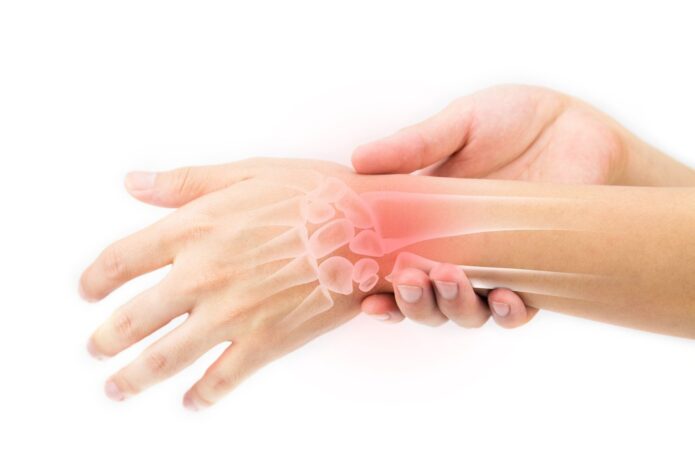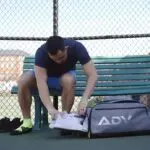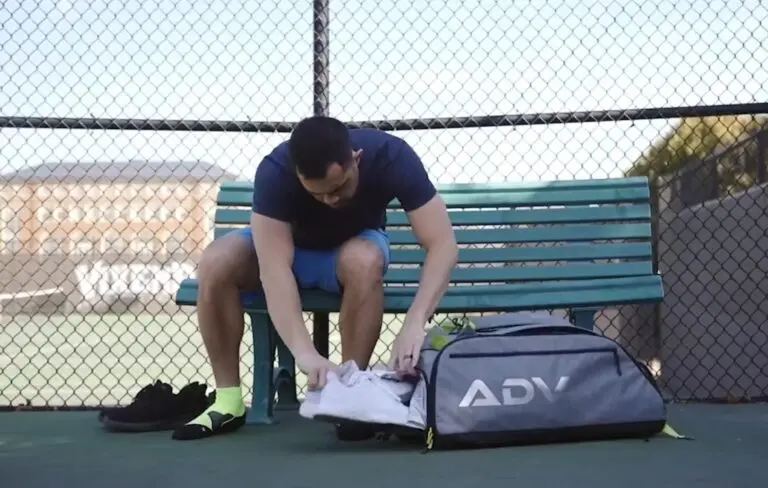Tennis is a popular summertime sport that involves total body participation, like running, positioning your body, swinging, striking the tennis ball, and hand-eye coordination. As thrilling as the sport is, the intense physical demands can lead to injury. Majority of the injuries associated with the game result primarily from poor conditioning and training.
If you are not adequately prepared, the repetitive motions that are a regular game component – including the serve and groundstrokes – can easily break down your body. So to make it through those strenuous summer matches, you must ensure that your muscles are strong, flexible, and have a lot of stamina.
To prevent common tennis injuries from occurring, you might need to take some pre-workout exercises to help strengthen your muscles and prepare for the game. Getting home equipment can help you with these workouts, making it easy to manage any pain or strain associated with the gameplay. Visit breakingmuscle.com for some of the best home gym machines today.
Most Common Tennis Injuries and exercises for recovery
1. Tennis Elbow

Sometimes, when you engage your wrist and arm in repetitive activities, the tendons that connect the forearm muscles to the outside of the elbow can be inflamed in the tennis elbow.
Tennis elbow also referred to as lateral epicondylitis or elbow pain, is a condition that is not always associated with the game of tennis. However, tennis players frequently get the injury because it results from repetitive muscle activation.
Exercise for Recovery
-
Fist Clench
You can improve your tennis playing skills by strengthening your grip through forearm development. You can do this exercise using a table and a towel.
To perform the exercise.
- Your forearm should be on the table while you sit at a table.
- Place a little ball or a towel that you have wrapped up in your palm.
- Give the towel a 10-second squeeze and hold it there.
- Ten times after release, repeat. Continue by using the other arm.
2. Back Pain/Stress Fracture

Tennis serves require a mix of hyperextension (bending the back), side-bending, and trunk rotation, which frequently results in stress fractures. The lower back vertebrae are strained by this motion, potentially resulting in a vertebral fracture. In addition, the vertebra may eventually migrate forward due to a condition known as spondylolisthesis. Although stress fractures are not usually painful, they can cause lower back pain that worsens with activity.
The surface also impacts the stress fractures you play on. However, the impact on the body is substantially more significant on hard tennis courts. Your risk of stress fractures increases each time you land on a hard court surface.
Exercise for Stress Fracture on your lower back
-
Swimming
Swimming is a non-strenuous exercise you can do for back pain recovery. Sometimes tight muscles cause back discomfort, or they might aggravate spinal problems, which can lead to higher pain. Endorphins, the feel-good hormones, are released during swimming and help to calm stiff muscles and your neurological system. In addition, much of your body is buoyant while you swim, so the water supports it. Compared to other forms of exercise, this significantly lessens the strain on your joints.
3. Rotator Cuff Tears

Four muscles and tendons that work together to form the rotator cuff give the shoulder support and mobility. Overuse can cause rotator cuff tears over time, but acute injuries can also cause rotator cuff tears. A rotator cuff rupture can cause shoulder pain, soreness, weakness, trouble elevating the arm, and snapping and crackling sounds when you move your shoulder.
Exercise for Rotator Cuff Tears/Pains
-
Doorway stretches
To do this exercise;
- Standing in an open doorway with your arms outstretched will help warm your muscles.
- Lean into the doorway until you feel a slight strain, then grab the sidewalls with one hand at or below shoulder height on each side.
- As you recline and put your weight on your toes, maintain a straight back. You should feel a stretch in the front of your shoulder. Avoid overextending.
4. Wrist Tendonitis

Inflammation of the tendons of the wrist is known as wrist tendonitis. It grows over time from swinging the racket, particularly if there is too much wrist action. As a result, it’s possible to experience pain in the palm or on either side of the wrist. Your wrist may also make a clicking sound.
Exercise for wrist tendonitis
-
Wrist Flexion and extension
Try doing wrist flexion and extension regularly for a speedier recovery from this injury.
To do the exercise;
- With your hand and affected wrist stretched past the table, palm down, place your forearm on the surface.
- To raise your hand and make a fist, flex your wrist. Then, let go of your hand to let your fingers loosen up. Hold each posture for approximately six seconds.
- Repeat the exercise 8 to 12 times daily.
-
You can also try the hand flips exercise.
To do this;
- Place your forearm and the affected wrist on your thigh while seated, palm down.
- Turn your hand over so that your palm is facing up and the back of your hand is resting on your thigh. Keep your forearm on your thigh and alternate between palms up and palms down.
- Repeat the exercise 8 to 12 times daily.
Conclusion
It is common to be susceptible to injuries when your muscles are weak or worn out because of changed mechanics. Fortunately, pre-game exercises, proper technique, using the right equipment, and getting medical assistance when injured may significantly reduce or even eliminate most of these injuries. You must also stay hydrated, eat healthy meals and regularly stretch your muscles before and after every game.
In case of a severe injury, it is important to consult a physical therapist or sports trainer for advice on specific stretches, drills, and treatments that could help you regain peak performance on the field of play. You may anticipate a personalized recovery plan as a patient, so ensure you express your needs to your healthcare provider.
Related:
- Top 19 Best Tennis Bags 2024 [Unbiased Reviews]
- 20 Best Tennis Shoes 2024 - Stylish and Athletic
- 18 Best Tennis Racquets 2024 - Exclusive Reviews &…
- 15 Best Tennis Racquet for Beginners & Intermediate…
- 15 Best Tennis Balls 2024 - USTA and ITF Approved
- Top 16 Best Pickleball Paddle 2024 - Step Up Your Game











